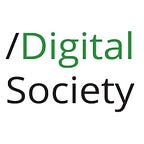Advice: referencing
Referencing facts and online ideas in your coursework
As in any academic work, referencing correctly is important, but the style we are using in this unit is less formal than you may be used to. This post helps you to develop in this area.
You may be referencing: your own ideas, ideas of peers or facts established by others. These ideas could have been shared publicly online, privately via digital means, in the classroom, or elsewhere in the ‘real world’.
Why is it important?
Being able to acknowledge and refer to others’ ideas appropriately is an important skill for academic work, but also for writing generally. Doing this well online sets you apart from a lot of writers and improves the quality of your writing. It rewards others for their work by giving credit, and helps people to explore the internet better through links.
How does this relate to assessment?
Because it is important, referencing comes up in all assessments. In digisoc2 for example the brief is:
“Address the opportunities or challenges facing an organisation or sector, using digital media and technology”
For the level on this criterion, you need to make reference to both the opportunities and the challenges appropriately. You could miss out on a top mark if you don’t reference correctly, but you can quite easily pick up the skill for your assessments, where you will be expected to reference any facts and ideas appropriately in your posts.
How do I reference in a written post (e.g. digisoc1, digisoc 2 and digisoc3)?
A blog post is closer in tone to a spoken presentation than it is to an academic paper.
For links, just include them as part of your text. It is always better to apply the link to the text, rather than include the link in full, i.e. this is better than this: https://medium.com/.
To apply the link to text, just select some text, click the link icon (or press Ctrl/⌘+K) and paste the link into the box. This doesn’t add to your word count, and there’s no need to include a list of references.
If you want to show a preview with your link, and are happy for it to take up more space, you can embed it instead (or in addition). We don’t include embeds in word counts. Just put the link on its own line, press enter and Medium will apply formatting like this:
Examples — linking to ideas from different contexts
In digisoc2 the marking criteria states you should be:
“including reference to personal knowledge and insight gained from peers, supported by appropriate and correctly-attributed information”
You do not have to do this in digisoc3 although we strongly encourage it. It’s likely there will be cases where you want to refer to your peers’ ideas, so please use this section as a guide.
When referring to ideas, as above, you should include a link if at all possible. This can replace a lot of the information in a ‘traditional’ reference because it provides a source. What you link to may depend what you are referencing. Below is a list covering most cases but please ask us if you are unsure.
- Idea from a post on Medium (e.g. digisoc1 post), link to the post
- Idea from a comment on Medium, link to the comment. (click the date on the comment to get its direct link)
- Idea from an anonymous comment (e.g. in a Contribute activity), link to the page on which it appears; make it clear it is an anonymous contribution.
- Idea from a student in a session/‘real life’ /group chat, link to their Medium profile unless they don’t want you to, in which case: give their real name (if they’re happy), say where they said it (e.g. the Internet session/in a study group), and link to the most relevant Topic page. If there’s nothing to link to just give enough detail so we know the source.
- Idea from anywhere else — name them and give a link to the webpage, or a page with details about the source (e.g. a journal article/ book).
- If the idea came out of a group discussion, name as many members of the group as you can as above, in your notes. When you present, you can shorten it to “As Andrea and others pointed out in a group discussion, …”
- If you don’t know who said it, and have tried your best to find out, just say something like “As one student mentioned in the Engagement session,”. However, you should only do this if you have no other option.
- If you said it, just say, “as I said in my digisoc1 post” and add a link.
- If you have chosen to keep your Medium profile separate (anonymous) from your real identity and don’t want to give this away to the class, you can refer to your Medium name as if it were a different person, e.g. “as topsecretblogger99 said on Medium, “, nobody will know it is you.
Please email digisoc@manchester.ac.uk with any questions or problems.
